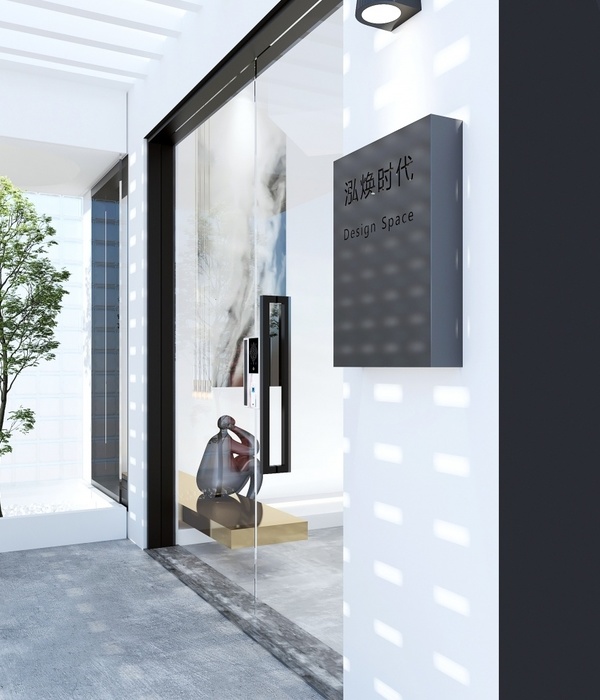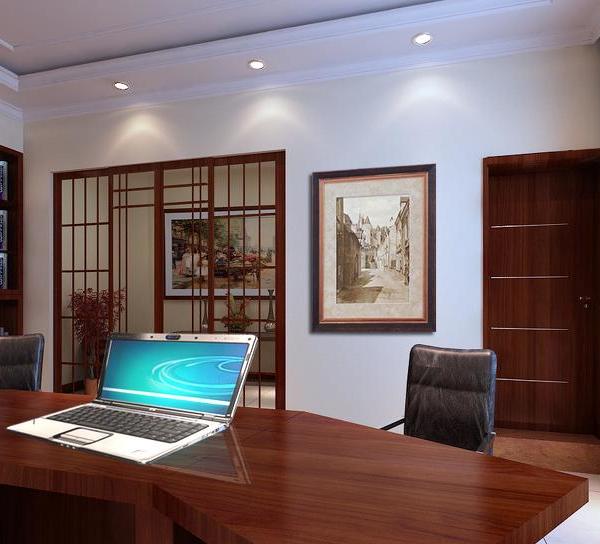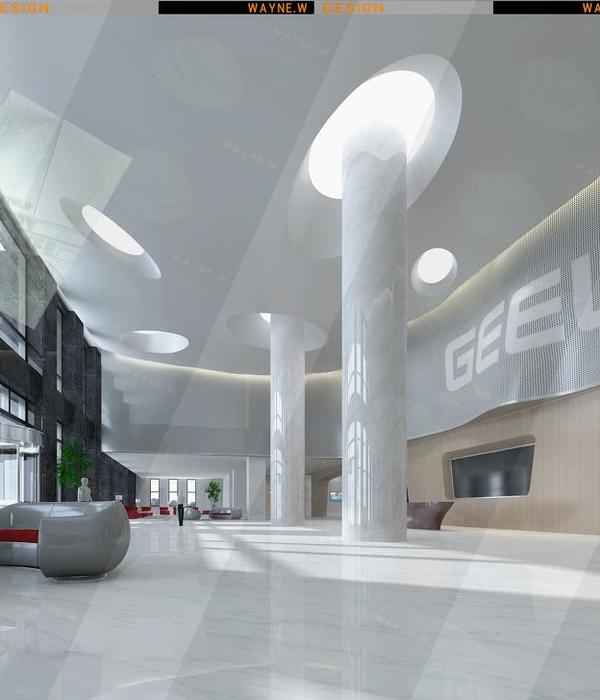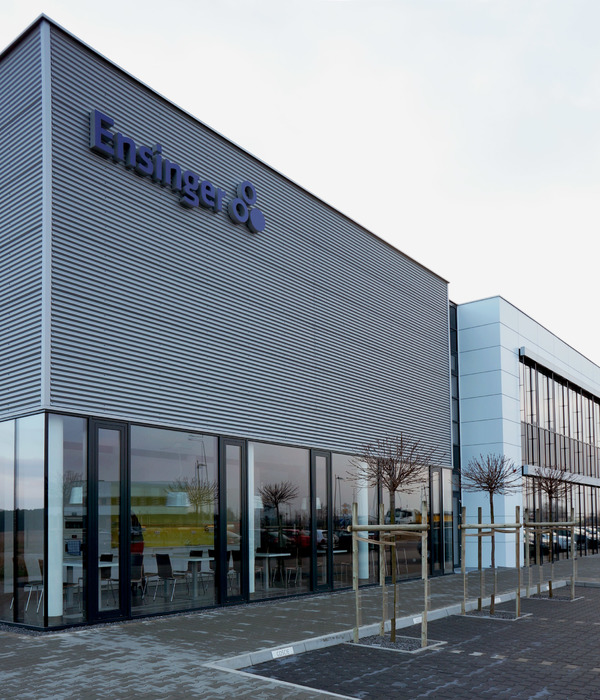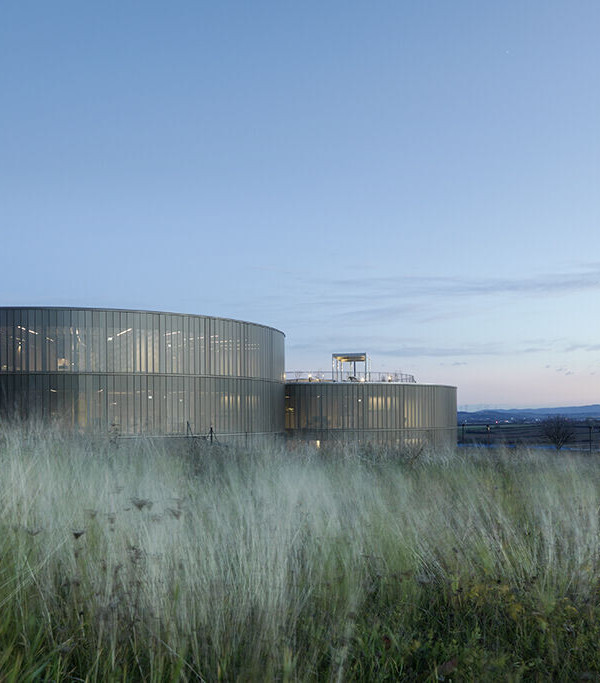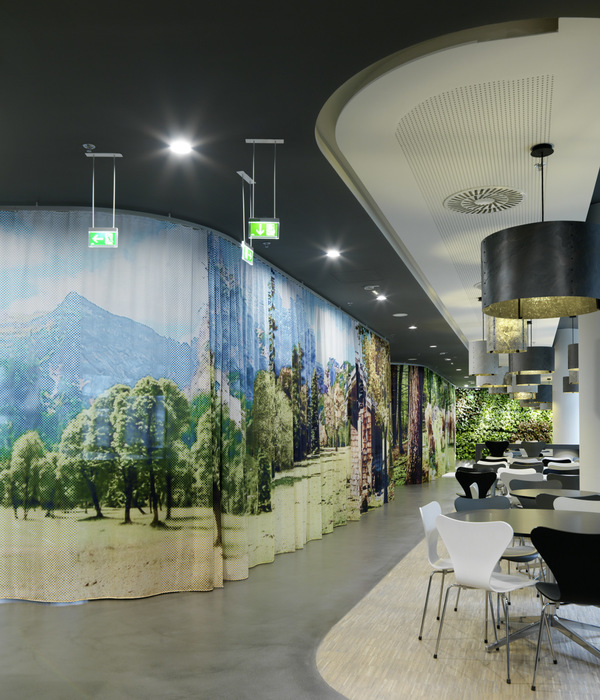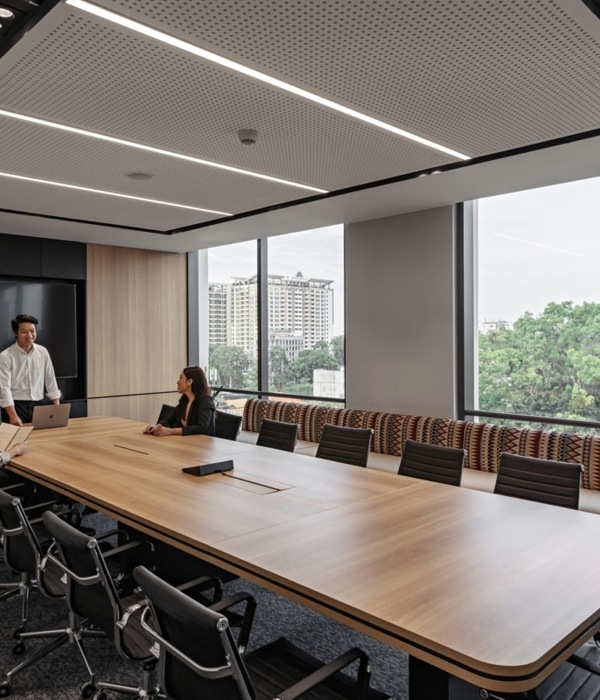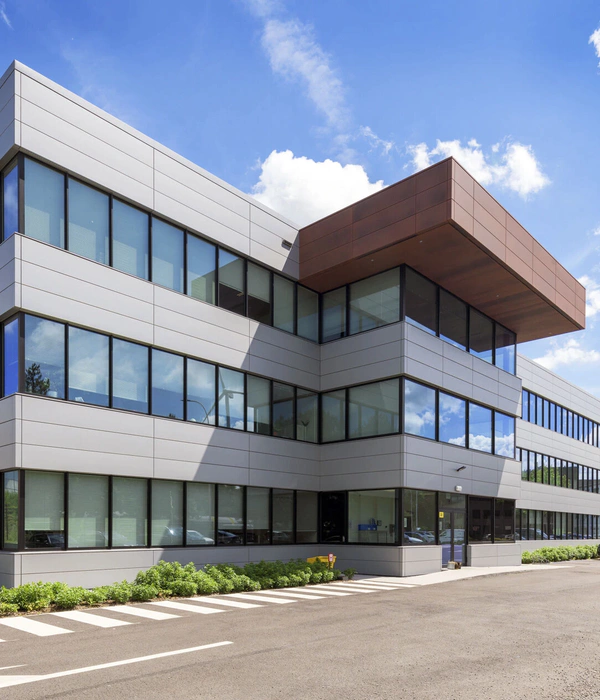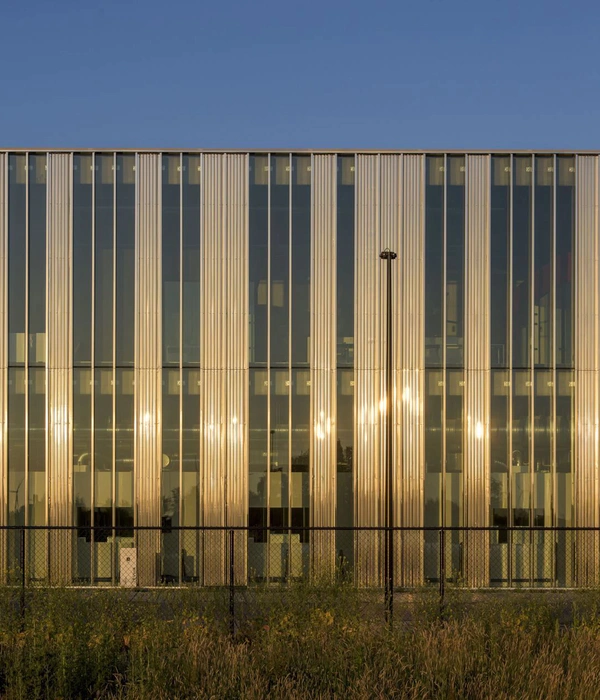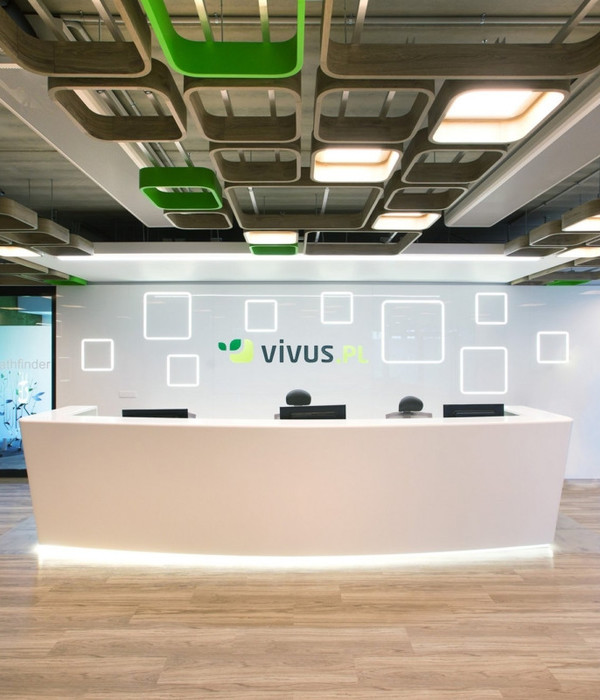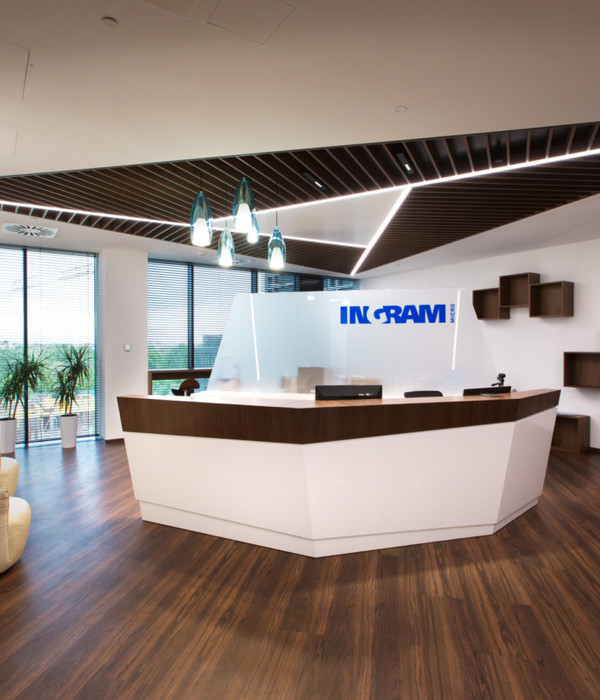英文名称:Netherlands PLVS VLTRA Incubator and multi tenant building
位置:荷兰
设计公司:Wiegerinck
摄影师:Kim Zwarts
这是由Wiegerinck设计的PLVS VLTRA孵化器与多租户建筑楼,位于荷兰瓦赫宁恩大学的校园里。初创企业、知识密集型技术企业与食品行业将在此拥有研究与开放创新的场所。PLVS VLTRA(Plus Ultra)意味着“总有一个有待发现和探索的未知领域”,象征着不断创新的承诺。该项目总建筑面积超过7000平方米,设有办公室、实验室、(局部)多功能技术厅以及用于邂逅和非正式交流的各种空间。该项目的设计尽可能紧凑、通透,并设有5层的近方形楼层平面。底部两层设有入口、接待区、餐饮设施、高技术厅/实验室以及办公室。顶部三层则为实验室/办公室。
译者:筑龙网艾比
The design of Wiegerinckarchitectuurstedenbouw (Wiegerinck architecture and urban planning) aims at synergy, encounters, cooperation and innovation through a maximally sustainable and robust design that aspires a Bream Excellent certificate. The design of Plus Ultra is as compact and transparent as possible with a virtually square floor plan with 5 floors. The bottom two floors offer space to a varied range of functions: entrance, reception, catering facilities, high “techno halls/labs” and office space. The top three floors are the laboratory/office layers.
The floor plans have been realised around a central atrium; on the lab/office levels, the floors between the exterior and interior facades of the atrium have been divided into three “rings”. The outer ring (on the facades) constitutes a flexible-use zone that is equipped for use both as laboratory and office space. The central ring is the circulation area that gives access to the interior and exterior rings. Office, meeting or encounter spaces on the atrium facade open up on the inner ring.In the atrium, an elegant wooden staircase spirals upwards from ground level to the atrium facade. On each floor, the stairs lead to a double-height meeting space finished in wood with an open connection to the central atrium. Faced from the atrium, the stairs and the high meeting spaces spiral up into the space. Plus Ultra.
Four building cores have been incorporated at the corners of the interior ring. All “fixed” facilities (vents, ducts, toilets, elevators and technical features) are housed in the building cores so that all other available space is open and suited for a wide range of layout options. The cores also ensure the constructional stability of the building.The use of material is quite discreet. The entire construction consists of concrete, wood, glass and metal. Where possible, the structure is the actual finishing. Only the central stairs and the double-height meeting spaces have wood slats cladding. The wood offers warmth and colour to counterbalance the concrete; it creates pleasant acoustics in the meeting areas and the atrium, and offers the option to place installations behind the panels.
The design is based on a crystal clear methodology. The floor plans have consistently been realised with a modular width of 3,6metres. This measure is always divided in piers of 0,9metres with openings of 2,7 metre wide in between. Vertically, the building consists of floors with a height of 4 metres. This measure is subdivided into floors of 40 cm thick with 60 cm space for technical facilities and 3 metres of free height. This harmonic dimensioning methodology stands out in all interior and exteriors facades and has been turned into a defining feature through facade jumps of 5 cm deep to create shadow lines and to ensure proper drainage from the wood elements.
The facades are realised in treated wood and anodized frames. Elegant wood slat screens limit the access of direct sunlight into the building, naturally reducing the cooling load. The screens that run parallel to the glass, also function as visual filters between (the laboratory set-ups) in and outside the building. The east and west facades are fitted with wood screens perpendicular to the windows. These limit heating up by low sun angles in the morning and evening. The screens on the south facade have been designed as canopies to offer protection from the midday sun for the same purpose. The north facade has been realised more level because of the absence of solar load.
The facade wood is finished in two wood tones with a subtle difference to emphasize the horizontality of the facade and to make it more dominant than the vertical elements - fitting in with the campus image quality plan. The vertical methodology of floors, technical zones and free space is also reflected in the facades in facade jumps of 5 cm. As a result, the building expands 10 cm on each layer with a vertical widening of the structure. This way, the building - both in outer appearance and through the integrated atrium - refers to its name “Plus Ultra” as well as to the innovation that it will facilitate.
荷兰PLVS VLTRA孵化器与多租户建筑楼外部实景图
荷兰PLVS VLTRA孵化器与多租户建筑楼内部实景图
荷兰PLVS VLTRA孵化器与多租户建筑楼示意图
荷兰PLVS VLTRA孵化器与多租户建筑楼剖面图
荷兰PLVS VLTRA孵化器与多租户建筑楼平面图
{{item.text_origin}}

